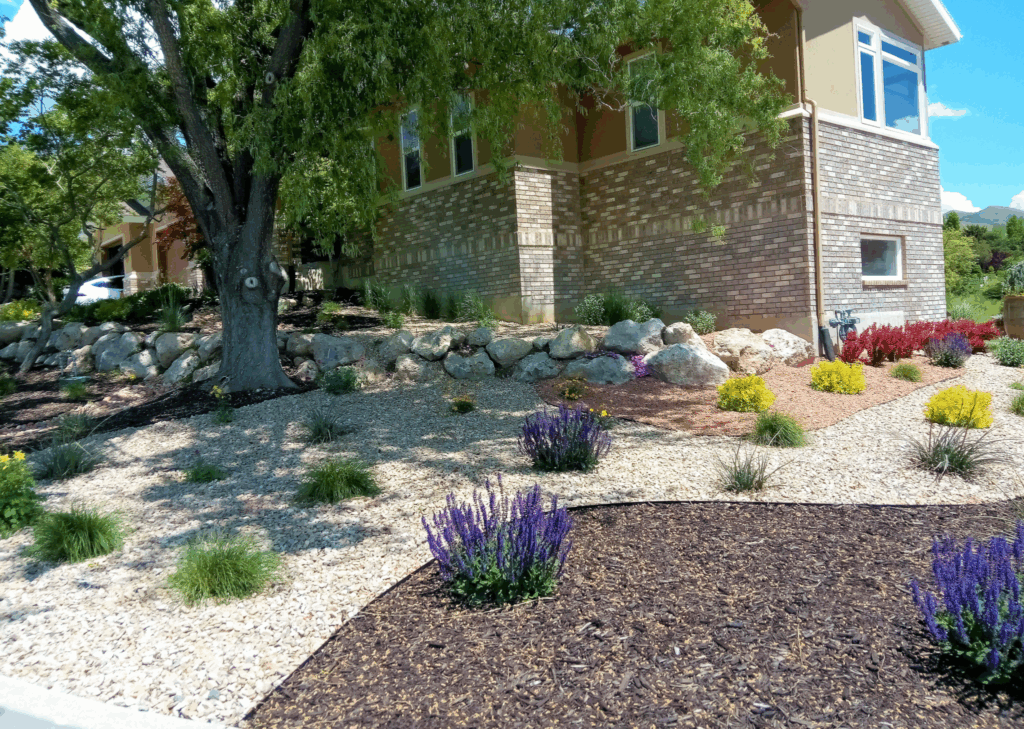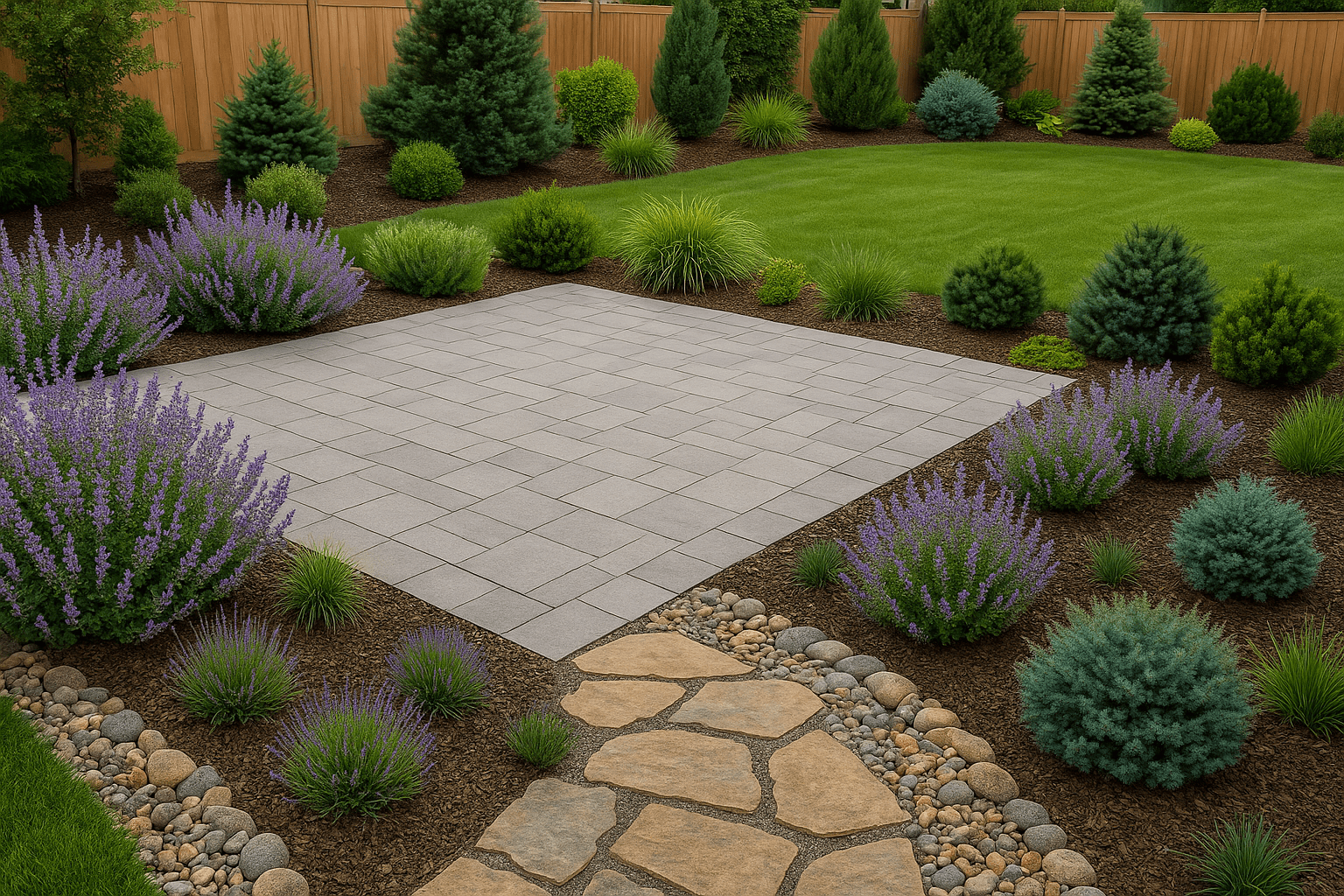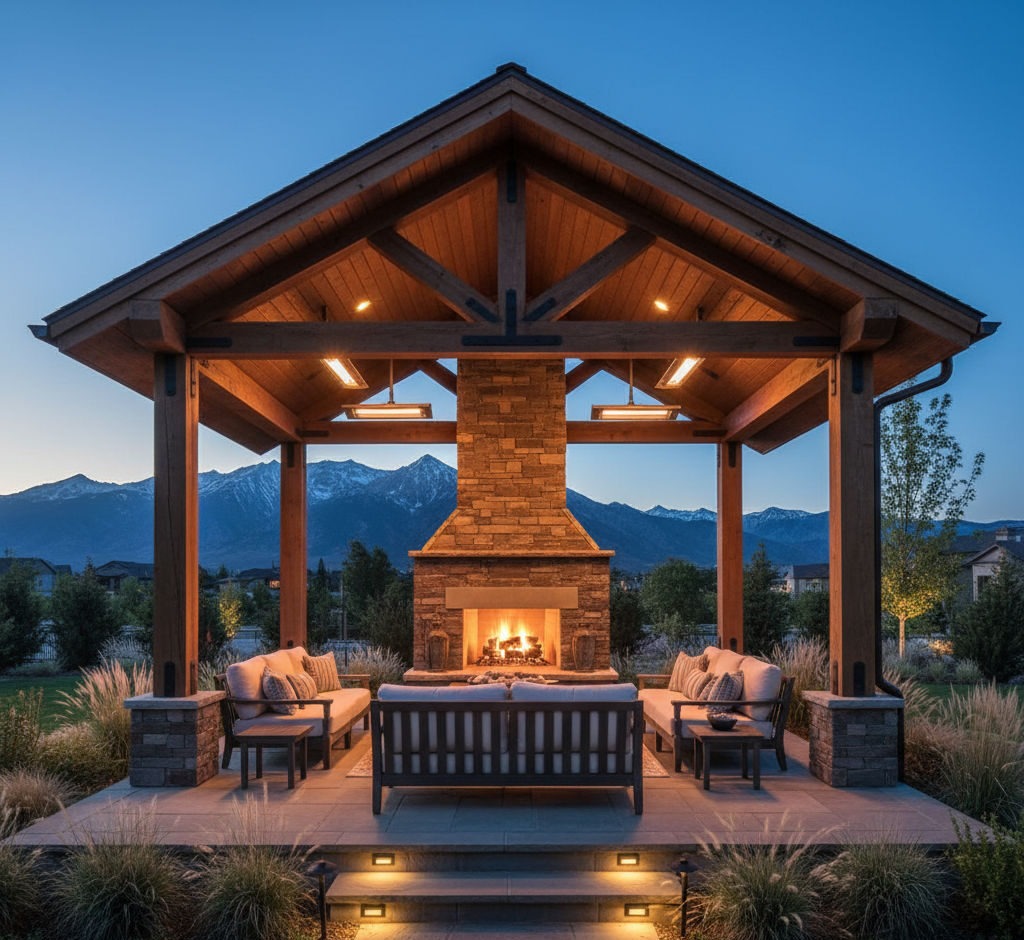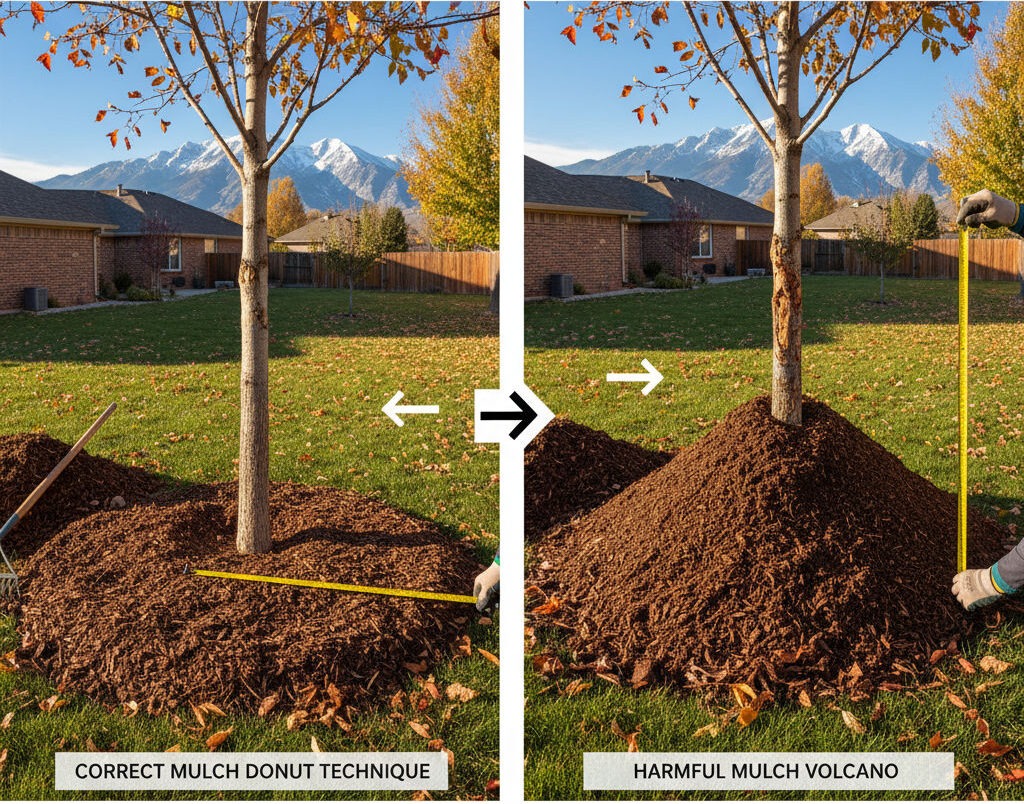When it comes to residential landscape design in Salt Lake City, the most stunning yards achieve a perfect balance between hardscape (the built features like patios, walkways, and retaining walls) and softscape (the living elements like plants, trees, and lawns). Striking that balance not only enhances curb appeal but also creates a functional, inviting outdoor space that fits Utah’s unique climate.
Whether you’re drawn to sleek, modern landscape design for Utah homes or a more natural, traditional look, blending these two elements thoughtfully can transform your property. Here’s how to get it right.
Understanding Hardscape vs. Softscape
- Hardscape includes man-made, permanent elements: patios, stone walkways, fire pits, retaining walls, pergolas, and decorative rock.
- Softscape includes living, organic elements: turfgrass, shrubs, ornamental trees, perennials, and flower beds.
A well-designed yard doesn’t lean too heavily on either side. Too much hardscape can look cold and uninviting, while too much softscape can feel messy and high-maintenance.
Why Balance Matters in Salt Lake City Landscape Design
Salt Lake City’s four-season climate puts landscapes to the test. Proper balance ensures:
- Durability: Hardscapes withstand snow and heat, while softscapes bring seasonal beauty.
- Functionality: Patios and pathways enhance usability, while plantings provide shade, softness, and biodiversity.
- Visual Appeal: Contrasting textures and colors create interest and flow in your yard.
The key to custom landscape design in Salt Lake City is making sure neither element dominates the other.
Tips for Pairing Hardscape and Softscape
1. Use Hardscape as the Framework
Start with structural elements like patios, stone borders, or retaining walls. These create clean lines and define spaces, making it easier to layer softscape around them.
2. Add Softscape for Warmth and Movement
Balance out the stone and concrete with shrubs, ornamental grasses, and flowering perennials. In Salt Lake City, drought-tolerant plants like lavender, penstemon, and creeping thyme complement hardscape beautifully.
3. Think About Flow
Design pathways that curve naturally, leading visitors through different areas of the yard. Pair them with planting beds for a seamless transition between man-made and natural features.
4. Play With Contrast
Contrast textures and colors. For example, a dark slate patio pops against bright green lawn or vibrant flower borders.
5. Design for Low Maintenance
Utah homeowners appreciate low-maintenance, residential landscape design. Incorporating smart irrigation, mulch, and durable materials reduces upkeep while keeping the balance intact.
Examples of Hardscape + Softscape Balance in Salt Lake City
- A modern Salt Lake City backyard with a paver patio framed by native grasses and evergreens.
- A front yard landscape design with a stone walkway leading to the porch, softened by colorful perennial borders.
- A terraced hillside in Utah featuring retaining walls balanced with cascading shrubs and wildflowers.
These combinations highlight how modern landscape design in Utah homes can merge strength with beauty.

Ready to bring harmony to your yard? Contact Millburn Lawn & Landscape—the trusted experts in custom landscape design in Salt Lake City. We’ll help you pair hardscape and softscape for a yard that’s stylish, functional, and built for Utah’s unique climate.
FAQ
Q: What’s the best ratio of hardscape to softscape?
A: While it depends on your yard’s size, a 40/60 or 50/50 balance often works best for visual appeal and functionality.
Q: Can I add more softscape to an already hardscape-heavy yard?
A: Yes—raised beds, container gardens, or perimeter plantings are easy ways to soften hardscapes.
Q: What are good low-maintenance plants for Salt Lake City yards?
A: Lavender, ornamental grasses, creeping thyme, and juniper are all hardy, drought-tolerant choices.
Q: Does balancing hardscape and softscape add value to my home?
A: Absolutely. Professionally designed yards boost curb appeal and increase property value in Salt Lake City neighborhoods.




